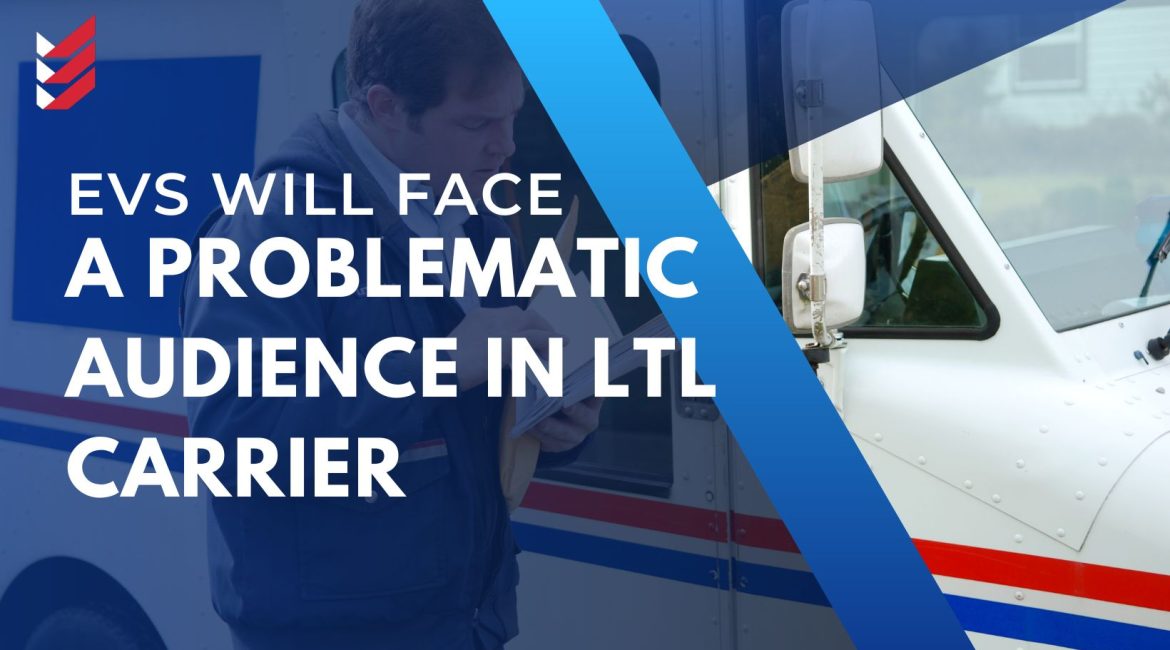In general, electric trucks remain a show-me story. EVs may be a no-show for less-than-truckload LTL carrier unless certain conditions change.
The twin bogeymen are lack of robust infrastructure and recharging time, but for LTL carriers more so than for their truckload counterparts. This is because an LTL uses vehicles for both local pickup and delivery and over-the-road services. This dual-use operation effectively keeps trucks in use 20 hours out of every 24 hours. After five years, LTL trucks are typically moved into local service only for the remaining eight to ten years of their lifecycle.
Charlie Prickett, president and COO of LTL carrier giant AAA Cooper Transportation, uses the charging time-to-operating time ratio to calculate EV cost-effectiveness in the world. According to Prickett, EVs currently receive six to seven hours of charge time, which equates to about eight hours of operating time, or about 400 miles.
Increased Truck and Driver Requirements for LTL Operations
According to Prickett, the subsequent charge cycle would take that vehicle out of service for large LTL fleets at critical times in their operations. Cooper explained that this would necessitate the addition of more trucks and drivers to replace one truck that could otherwise perform a full day’s work.
If LTL trucks are restricted to 400-mile trips followed by six to seven hours of recharge idle time, this setup could reduce the economic leverage of asset utilization and transit speed, Prickett wrote in an email. He described the range and economic impact on equipment utilization and delivery transit times as “particularly impactful” for LTL carrier.
Because roughly half of Cooper’s 3,000 vehicles are dual-purpose, the adoption of EVs would effectively limit many of the trucks to urban service, according to Prickett.
While dealing with the current lack of supporting EV infrastructure, truckload carriers do not face the dual-use utilization pressure that LTL carriers do. According to Prickett, truckload carriers can fill up their rigs with 200 gallons of diesel in 20 to 30 minutes and get 22 hours — or 1,500 miles — of run time from the tank.
The difference between truckload and LTL truck utilization is “stark,” Prickett said earlier this week at the SMC3 annual winter meeting in Atlanta. Large LTL fleets must overcome that disparity to successfully adopt EVs.
The Economic Value Proposition for EVs
Prickett said at the event in an interview with FreightWaves, “We have yet to discover the economic value proposition of EVs. However, this doesn’t mean we shouldn’t pursue alternative cleaner energy in the future.”
Improvements in battery charging power, more robust charging infrastructure, and a general push toward testing and development of alternative energy sources, hybrid fuels, and related technologies, according to Prickett, will be inflection points.
Cooper is planning EV tests with two customers who will use the vehicles for dedicated contract carriage, where shippers effectively book out capacity for a period of time in exchange for guaranteed volumes, according to Prickett. Cooper’s parent company is also testing electric vehicles.
There will be difficulties ahead.
EVs are currently twice as expensive as diesel trucks, costing between $300,000 and $400,000. Federal and state incentives are available to bring the cost of purchasing or leasing an EV in line with diesel. California, for example, offers incentives of up to $168,000 per truck, with an additional $40,000 available under the federal Inflation Reduction Act.
Prickett does not believe that vehicle costs will be a long-term issue once prices begin to fall. To work on EVs, maintenance and repair technicians would need to be trained. Cooper’s technicians are “extremely skilled individuals” who should have little difficulty adapting to the new technology.
Policymakers and regulators have set deadlines of 2040 or 2045 for the end of new diesel-powered truck sales. However, such a looming deadline would be unlikely to completely eliminate diesel trucks from the road. Transitioning to battery-electric powertrains for regional hauls and fuel-cell electric for longer hauls is likely.
Battery Size and Range Limitations
Other considerations include the size and weight of a truck battery, which may limit range and crowd out available payload. This may necessitate the use of more trucks to transport the same amount of freight.
The need to fit battery charging stations into areas already in short supply for truck parking poses a significant challenge. Unlike LTL carrier, who use terminals to locate charging stations, truckload carriers charge batteries on the road.
Denise Kearns, an environmental professional for the EPA’s long-running “SmartWay” public-private partnership, said the goals for transitioning to EVs are ambitious, owing to the high costs. Demand and orders will “trickle in at first,” according to Kearns. “However, we have a long way to go.”
According to Bill Sullivan, executive vice president of advocacy at the American Trucking Associations (ATA), at the SMC conference, EVs will likely capture less than 10% of the Class 8 vehicle market share using current battery technologies.
